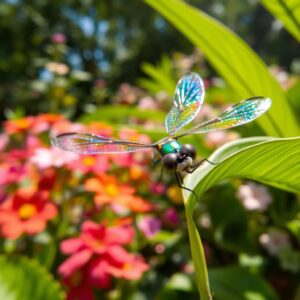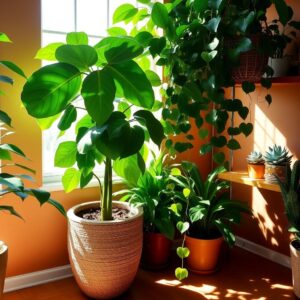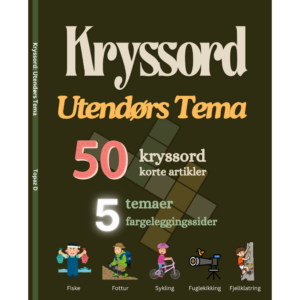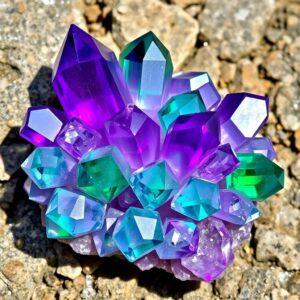
Explore & Play
Discover interesting topics and solve the accompanying crossword puzzle.
Plant Crossword | Guide to Poisonous Plants
Table of Contents
Welcome to our comprehensive guide on poisonous plants! To make the most of this article, we invite you to start with our engaging Plant Crossword. It’s a fun way to familiarize yourself with key terms related to toxic plants. If you’re new to the topic or want to deepen your understanding, feel free to read the article first and then return to the crossword for a rewarding challenge. Whether you dive into the crossword first or read the article for background, we hope you find both educational and enjoyable.
Toxic Plant Crossword
You can either fill in the crossword puzzle directly on this page or click the button in the bottom right corner to print it for free.
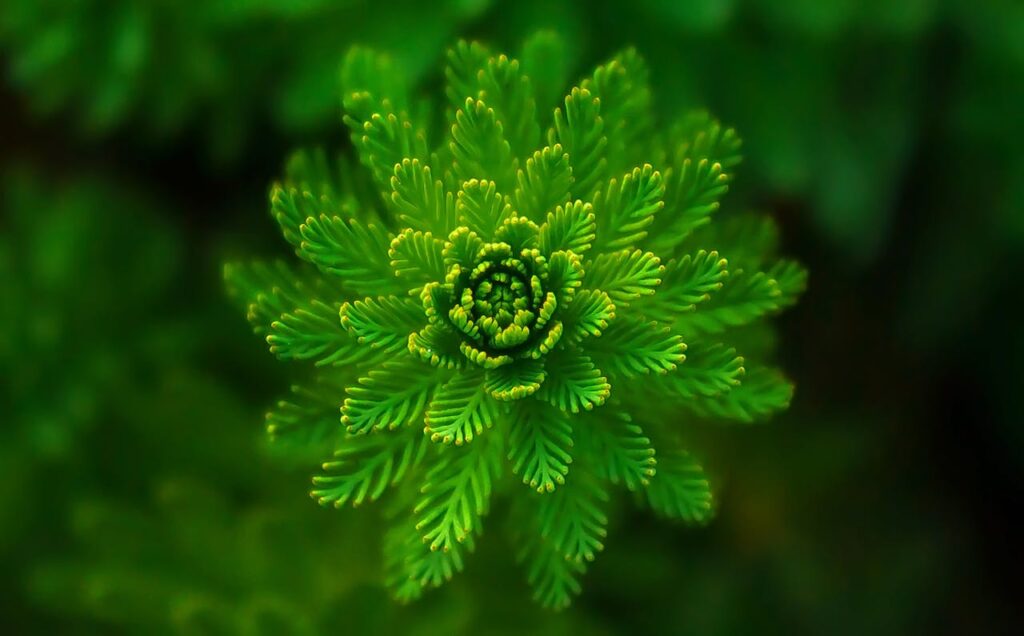
Understanding the Risks: A Comprehensive Guide to Poisonous Plants in Gardens
Gardens are a haven of beauty and tranquility, but lurking among the vibrant flora can be plants that pose serious health risks. This article aims to shed light on the dangers of poisonous plants commonly found in gardens, offering insights into their identification, management, and safety measures. We’ll also explore the role of crossword puzzles in increasing awareness about these hazardous plants.
Overview of Poisonous Plants
Poisonous plants come in many forms and can be found in various settings, from wild areas to well-manicured gardens. Understanding what makes a plant toxic and how it affects humans and animals is crucial for any gardener. These plants contain chemicals that can cause a range of symptoms from mild irritation to severe health issues or even death.
Plants become toxic through various chemical compounds, including alkaloids, glycosides, and resins. These substances can affect different body systems, leading to symptoms such as nausea, vomiting, diarrhea, or more severe reactions like cardiac arrest or respiratory distress. Awareness of these risks is essential for preventing accidental poisonings.
Common Toxic Plants in Gardens
Many common garden plants are beautiful but carry hidden dangers that can affect both people and pets. Below are some of the most notorious poisonous plants you might encounter in a garden setting.
Belladonna (Deadly Nightshade)
Belladonna, also known as deadly nightshade, is notorious for its toxic properties and historical uses. This plant features dark, glossy leaves and bell-shaped, purple flowers, which give way to shiny black berries. All parts of this plant are toxic, containing atropine and scopolamine, compounds that can cause delirium, hallucinations, and even death if ingested in significant quantities. Historically, belladonna was used in cosmetics to dilate the pupils, giving it its name “beautiful lady” in Italian. However, its risks far outweigh its aesthetic appeal.
Hemlock
Hemlock, infamous for its historical association with Socrates, is another highly toxic plant commonly found in gardens. This plant has finely dissected leaves and small, white, umbrella-like clusters of flowers. Hemlock contains coniine, a potent neurotoxin that disrupts the nervous system and can lead to respiratory failure. Socrates’ death by hemlock is a stark reminder of its lethal nature. Recognizing and removing this plant from your garden is crucial for safety.
Oleander
Oleander is a popular ornamental shrub, but its beautiful flowers mask a highly toxic nature. With its evergreen leaves and clusters of vibrant, tubular flowers in shades of pink, red, or white, oleander is a common sight in many gardens. However, all parts of this plant, including leaves, flowers, and seeds, contain cardiac glycosides that can lead to heart arrhythmias, gastrointestinal distress, and even death if ingested. Despite its toxicity, oleander is sometimes used in traditional medicine, but its risks cannot be ignored.
Foxglove
Foxglove, with its striking bell-shaped flowers, can pose serious health risks due to its cardiac glycosides. This plant’s tall spikes are adorned with tubular flowers that range from white to pink to purple. The compounds found in foxglove can interfere with heart function, leading to symptoms such as nausea, vomiting, and abnormal heart rhythms. While it has been used in medicine to treat heart conditions, its potent effects mean that caution is necessary when handling or planting it.
Sago Palm
The sago palm’s exotic appearance hides a dangerous toxin that can be fatal to pets and harmful to humans. This plant is often used as a decorative element in gardens due to its feathery, palm-like leaves. However, the seeds and leaves contain cycasin, a potent toxin that can cause severe liver damage. Ingesting even a small amount of sago palm can be fatal, particularly for pets. Proper handling and placement of this plant away from children and animals are essential.
Identifying and Managing Toxic Plants
Proper identification and management of toxic plants are crucial for maintaining a safe garden environment. Understanding how to recognize these plants and implementing strategies to manage them can prevent accidental poisoning.
How to Identify Poisonous Plants
Knowing how to identify poisonous plants can help prevent accidental exposure and ensure a safer gardening experience. Accurate identification is crucial because many toxic plants look similar to non-toxic varieties, and their risks may not be immediately obvious. Here’s a detailed guide to help you recognize and manage poisonous plants in your garden.
1. Recognize Common Visual Clues
One of the first steps in identifying poisonous plants is to observe their physical characteristics. Here are some common visual clues to look out for:
Leaf Shape and Arrangement: Toxic plants often have distinctive leaf shapes or arrangements. For instance, the broad, dark green leaves of the Oleander contrast sharply with the delicate, feathery leaves of Fennel (a non-toxic plant). Observing the shape, size, and pattern of leaves can help in distinguishing between harmful and harmless plants.
Flower and Fruit Appearance: Many poisonous plants have unique flowers or fruits. The bell-shaped, purple flowers of Foxglove or the clusters of white blooms on Hemlock are notable examples. Fruits, like the glossy black berries of Belladonna, can also be a red flag. Pay attention to the color, shape, and arrangement of flowers and fruits.
Plant Size and Growth Habit: Toxic plants may have specific growth habits or sizes. For example, the tall, spike-like growth of Foxglove is quite different from the low, spreading habit of Creeping Charlie (a non-toxic ground cover). Understanding the plant’s growth habit can aid in its identification.
2. Know the Plant’s Toxic Parts
Not all parts of a plant may be toxic, so it’s essential to understand which parts are harmful. Here’s a guide to the different parts and their potential dangers:
Leaves: Many toxic plants, like Oleander and Rhubarb, have poisonous leaves. Direct contact with the leaves or ingestion can lead to severe symptoms.
Flowers: Some plants, such as Lily of the Valley, have toxic flowers. Ingesting even a small amount of these flowers can cause health issues.
Fruits and Seeds: The seeds and fruits of plants like Belladonna and Sago Palm are highly toxic. They may look attractive but pose significant risks if consumed.
Roots and Tubers: Toxic plants such as Hemlock have dangerous roots. Handling or ingesting these parts can be harmful.
3. Use Identification Resources
Several resources can assist in identifying poisonous plants and ensuring safety:
Plant Identification Apps: Smartphone apps like PlantNet or PictureThis allow you to take a photo of a plant and receive information about its identity and toxicity. These tools are valuable for quick and accurate identification.
Gardening Books and Guides: Many books and field guides provide detailed descriptions and images of poisonous plants. “The Plant Lover’s Guide to Toxic Plants” is an excellent example that covers various harmful species in detail.
Online Databases and Websites: Websites like the American Association of Poison Control Centers and the ASPCA’s Animal Poison Control Center offer comprehensive information on plant toxicity. These resources provide up-to-date data and practical advice.
4. Consult Local Experts
If you’re unsure about a plant’s toxicity or need help with identification, consulting local experts can be beneficial:
Extension Services: Many regions have agricultural extension services or botanical gardens where experts can help with plant identification and provide advice on managing toxic plants.
Local Nurseries and Garden Centers: Staff at nurseries and garden centers are often knowledgeable about local plant species and can provide guidance on which plants are toxic and how to handle them.
Poison Control Centers: In case of exposure or ingestion, contacting a local poison control center can provide immediate assistance and guidance.
5. Practice Safe Gardening Habits
In addition to identifying poisonous plants, practicing safe gardening habits can help minimize risks:
Wear Protective Gear: Always wear gloves, long sleeves, and other protective clothing when handling unfamiliar plants. This can prevent skin contact with potentially toxic substances.
Educate Family and Friends: Make sure that everyone in your household, especially children and pets, is aware of the dangers associated with certain plants. Educate them on which plants to avoid and the symptoms of poisoning.
Label Toxic Plants: Clearly label any known toxic plants in your garden. This simple precaution can help prevent accidental contact or ingestion.
Managing and Controlling Toxic Plants
Effective management and control of toxic plants are crucial for maintaining a safe garden environment. Understanding how to handle these plants safely and implementing strategies to mitigate their risks can prevent accidents and ensure a secure outdoor space for everyone.
1. Safe Handling Practices
Handling toxic plants with care is essential to avoid exposure to their harmful substances. Here’s how to manage these plants safely:
Wear Protective Clothing: When working with or near poisonous plants, always wear gloves, long sleeves, and protective eyewear. This minimizes direct contact with the plant’s toxic parts and reduces the risk of skin irritation or accidental ingestion.
Use Tools and Equipment: Utilize gardening tools, such as pruners or trowels, rather than handling plants directly with your hands. This approach helps avoid accidental contact with toxic plant parts. Clean tools thoroughly after use to remove any residue.
Avoid Inhalation: Be cautious about inhaling plant dust or pollen, especially from plants like Foxglove and Hemlock, which can cause respiratory issues. Work in well-ventilated areas and consider wearing a mask if working with particularly dusty or allergenic plants.
2. Barriers and Containment Measures
Implementing physical barriers and containment strategies can help prevent accidental exposure to toxic plants:
Fencing and Barriers: Installing fences or garden barriers around toxic plants can keep children and pets from coming into contact with them. Ensure that the barriers are high and sturdy enough to prevent animals from climbing over or squeezing through.
Plant Collars and Guards: Use plant collars or protective guards around the base of toxic plants. These can help keep animals and small children from accessing the plants and reduce the risk of accidental ingestion or contact.
Strategic Plant Placement: Place toxic plants in areas of your garden that are less accessible to children and pets, such as behind fences or in raised beds. Positioning them away from high-traffic areas can minimize accidental encounters.
3. Safe Disposal of Toxic Plants
Proper disposal of toxic plant material is vital to prevent exposure and contamination:
Regular Removal: Regularly remove and dispose of dead leaves, flowers, and other plant debris from toxic plants. This prevents the buildup of hazardous material and reduces the risk of accidental contact or ingestion.
Secure Disposal: Dispose of toxic plant material in secure, sealed bags to prevent animals or people from coming into contact with it. Avoid composting toxic plant material, as it can spread toxins and potentially harm others.
Follow Local Guidelines: Check local regulations for disposing of hazardous plant material. Some areas may have specific guidelines or facilities for handling toxic waste.
4. Educating Family and Visitors
Education plays a key role in preventing accidents and ensuring everyone is aware of the potential risks:
Inform Family Members: Make sure that everyone in your household understands which plants in your garden are toxic. Provide clear instructions on what to avoid and the symptoms of poisoning.
Educate Visitors: When hosting guests, especially if they have children or pets, inform them about the presence of toxic plants in your garden. This precaution can help prevent accidental exposure and ensure that everyone is aware of the potential hazards.
Use Signage: Place warning signs or labels near toxic plants to alert anyone entering your garden. Clear, visible signage can remind people to exercise caution and avoid touching or ingesting plant parts.
5. Monitoring and Maintenance
Ongoing monitoring and maintenance are essential to managing toxic plants effectively:
Regular Inspections: Regularly inspect your garden for signs of toxic plants and ensure that barriers and containment measures are intact. Look for any signs of damage or wear that could reduce the effectiveness of your safety measures.
Update Safety Measures: As plants grow and change, update your safety measures accordingly. For example, if a plant becomes larger or spreads, adjust barriers or re-evaluate its placement to maintain safety.
Stay Informed: Keep up-to-date with new information about toxic plants and gardening safety. Continued education can help you manage your garden more effectively and respond to emerging risks.
Emergency Response to Poisoning
In the event of poisoning, prompt and correct action can be life-saving. Knowing how to respond effectively can make a significant difference in the outcome of poisoning incidents.
Symptoms of Poisoning
Recognizing the symptoms of poisoning from toxic plants is crucial for seeking timely medical attention and ensuring effective treatment. Symptoms can vary widely depending on the type of plant, the part of the plant consumed, the amount ingested, and the individual’s overall health. Here’s a comprehensive look at the signs of poisoning, how they can manifest, and what to do if you encounter them.
1. Common Symptoms of Poisoning
Many symptoms of plant poisoning are general and can resemble those of other illnesses, making it important to consider recent plant exposure when diagnosing the issue. Common symptoms include:
Nausea and Vomiting: These are among the earliest signs of poisoning and often occur shortly after ingesting toxic plant material. For instance, ingestion of Oleander can lead to severe gastrointestinal distress, including nausea and vomiting.
Diarrhea: Another frequent symptom, diarrhea, often accompanies nausea and vomiting. Plants like Foxglove and Sago Palm can cause gastrointestinal upset, resulting in frequent and possibly painful bowel movements.
Abdominal Pain: Cramping or pain in the abdominal area can indicate the presence of toxins affecting the digestive system. Plants such as Rhubarb have oxalates that can cause significant abdominal discomfort.
Dizziness and Headache: These symptoms may arise from the systemic effects of plant toxins, which can interfere with normal bodily functions. For example, Belladonna contains atropine, which can affect the nervous system, leading to dizziness and headaches.
2. Severe Symptoms of Poisoning
In more severe cases of poisoning, symptoms can escalate to life-threatening conditions. Immediate medical attention is required if these symptoms occur:
Confusion and Delirium: Some plant toxins, such as those found in Belladonna and Jimsonweed, can affect the central nervous system, leading to confusion, hallucinations, and delirium. This severe neurological impact requires urgent medical intervention.
Seizures: The ingestion of highly toxic plants like Hemlock or Sago Palm can lead to seizures. Seizures are a serious symptom that indicates severe neurological distress and necessitates immediate emergency care.
Difficulty Breathing: Toxins from plants such as Oleander and Foxglove can interfere with respiratory function, leading to symptoms like shortness of breath, wheezing, or even respiratory failure. Difficulty breathing is a critical symptom that demands urgent medical attention.
Unconsciousness: In extreme cases, poisoning can lead to loss of consciousness or coma. Plants with potent neurotoxins, such as Hemlock, can affect the brain and nervous system severely enough to result in unconsciousness.
3. Specific Symptoms Associated with Toxic Plants
Each toxic plant has its own unique set of symptoms based on its chemical composition. Here’s a closer look at symptoms associated with some well-known poisonous plants:
Belladonna (Deadly Nightshade): Symptoms include dilated pupils, sensitivity to light, blurred vision, and hallucinations. High doses can cause severe delirium and life-threatening conditions.
Foxglove: This plant contains cardiac glycosides that can lead to irregular heartbeats, nausea, vomiting, and abdominal pain. In severe cases, it can cause heart arrhythmias and potentially fatal heart conditions.
Sago Palm: Toxic compounds in this plant can cause vomiting, diarrhea, and severe liver damage. Symptoms of poisoning may include jaundice, lethargy, and gastrointestinal bleeding.
Hemlock: Symptoms include nausea, vomiting, abdominal pain, and progressive neurological signs like muscle twitching and respiratory distress. Severe cases can lead to paralysis and death.
4. What to Do in Case of Poisoning
If poisoning from a toxic plant is suspected, it is essential to take the following steps:
Seek Immediate Medical Attention: Contact emergency services or go to the nearest emergency room immediately. Provide details about the plant involved, the quantity ingested, and the symptoms observed.
Provide Information: If possible, take a sample of the plant or a photograph to help medical professionals identify the toxin and provide appropriate treatment.
Follow Medical Advice: Adhere to all instructions given by medical professionals. Treatment may include activated charcoal to absorb toxins, medications to counteract symptoms, or specific antidotes for certain poisons.
Monitor Symptoms: Keep a close watch on symptoms and report any changes or worsening of conditions to healthcare providers promptly.
First Aid and Treatment
In cases of poisoning from toxic plants, knowing how to provide basic first aid and when to seek professional medical help is crucial. Prompt and appropriate action can significantly impact the outcome and potentially save lives. Here’s a detailed guide on how to handle poisoning incidents effectively:
1. Immediate Actions
The first step in any poisoning situation is to seek immediate medical help. Here’s what you should do right away:
Call Emergency Services: Contact emergency services or poison control immediately. Provide them with all necessary details, including the plant involved, the amount ingested, the time of exposure, and the symptoms observed. This information helps medical professionals prepare for appropriate treatment.
Assess the Situation: While waiting for medical help to arrive, evaluate the severity of the symptoms and the condition of the affected person. This assessment can help you provide accurate information to emergency responders and assist in prioritizing care.
2. Actions for Ingested Poisons
If the toxic plant has been ingested, specific actions can help mitigate the effects:
Inducing Vomiting: If the poisoning has occurred recently (generally within the last hour), and it is safe to do so, inducing vomiting might help remove the toxins from the stomach. However, do not induce vomiting if the person is unconscious, semi-conscious, or experiencing convulsions. Always consult a medical professional before attempting this method, as it may not be suitable for all types of poisoning.
Administering Activated Charcoal: Activated charcoal can be effective in absorbing toxins and preventing their absorption into the bloodstream. This treatment should only be administered under the guidance of a healthcare professional, as it is not appropriate for all poisons and can be contraindicated in certain situations.
Avoiding Certain Substances: Do not administer any antidotes, home remedies, or medications without professional advice. Substances like milk, alcohol, or vinegar can sometimes worsen the situation or interfere with medical treatment.
3. Actions for Skin or Eye Contact
For poisoning caused by skin or eye contact with toxic plants, follow these steps:
Rinsing the Affected Area: Immediately rinse the affected skin or eyes with copious amounts of clean, lukewarm water. This helps to remove the plant toxins and reduce irritation. For skin contact, use mild soap and water to wash the area thoroughly. For eye contact, flush the eyes gently but continuously for at least 15 minutes, ensuring the water flows from the inner corner to the outer corner.
Avoid Scratching or Rubbing: Refrain from scratching or rubbing the affected area, as this can further irritate the skin or spread the toxin.
Cover the Area: After rinsing, cover the affected area with a clean, dry cloth or bandage to protect it from further exposure or contamination.
4. Monitoring and Follow-Up Care
Once initial first aid has been administered, ongoing care and monitoring are essential:
Observe Symptoms: Continuously monitor the person’s symptoms and overall condition. Note any changes, including the development of new symptoms or worsening of existing ones, and relay this information to healthcare professionals.
Follow Medical Instructions: Adhere to the treatment plan and recommendations provided by medical professionals. This may include taking prescribed medications, undergoing additional tests, or following specific care guidelines.
Emergency Room Evaluation: Even if symptoms seem to improve, a thorough evaluation in an emergency room or by a poison control center is crucial. Some toxins may have delayed effects, and a medical professional can provide comprehensive care and monitoring.
5. Preventive Measures and Education
Taking preventive measures and educating yourself and others can help avoid future incidents:
Learn About Toxic Plants: Familiarize yourself with the toxic plants in your area and their potential risks. Knowledge about which plants to avoid and how to handle them safely can prevent accidental poisonings.
Educate Family Members: Ensure that all household members, including children and pets, understand the dangers of toxic plants and know what actions to take in case of exposure.
Keep Emergency Information Handy: Maintain a list of emergency contacts, including poison control centers and local emergency services, in a readily accessible location. This preparation can speed up response times in critical situations.
Creating a Safe Garden Environment
Designing a garden with safety in mind ensures a beautiful and secure space for everyone. By taking proactive steps, you can enjoy a garden that is both aesthetically pleasing and free from harmful plants.
Choosing Non-Toxic Plants
Opting for non-toxic plants reduces the risk of accidental poisoning and makes for a safer garden. Numerous beautiful and safe alternatives can replace poisonous plants, such as marigolds, sunflowers, and lavender. These plants not only enhance the garden’s visual appeal but also provide benefits like attracting pollinators and adding fragrance. Selecting non-toxic varieties ensures that your garden is safe for children and pets while still being vibrant and enjoyable.
Educational Resources and Tools
Utilizing educational resources and tools can enhance your knowledge and help in making informed gardening decisions. Plant identification apps, gardening books, and online databases can provide valuable information on poisonous plants and their safe handling. Engaging with interactive tools, such as crosswords related to plant safety, can also be an effective way to learn about these hazards in an engaging manner. These resources support ongoing education and awareness, contributing to a safer gardening experience.
Final Thoughts: Ensuring a Safe and Beautiful Garden
Being aware of the potential dangers of poisonous plants and taking proactive steps can help ensure that your garden remains a safe and enjoyable place. By understanding how to identify and manage toxic plants, you can prevent accidents and protect your family and pets. Remember to use educational resources and implement safety measures to create a garden that is both beautiful and secure. With these precautions, you can enjoy the pleasures of gardening without compromising safety.
Share to...
I hope you enjoy the content.
Want to receive our daily crossword puzzle or article? Subscribe!
You may also be interested in
Share to…
Want to receive our daily crossword puzzle?
-
Jigsaw Puzzles
Charming Hamster Art Nouveau Jigsaw Puzzle 250 | 300 | 500 Pieces
kr 348,00 – kr 439,00Price range: kr 348,00 through kr 439,00 Select options This product has multiple variants. The options may be chosen on the product page -
Jigsaw Puzzles
Chinese Dragon Jigsaw Puzzle – Zodiac Series Art 250 | 300 | 500 Pieces
kr 348,00 – kr 439,00Price range: kr 348,00 through kr 439,00 Select options This product has multiple variants. The options may be chosen on the product page -
Jigsaw Puzzles
Art Nouveau Jigsaw Puzzle with Betta Fish in Lush Garden Scene 250 | 300 | 500 Pieces
kr 348,00 – kr 439,00Price range: kr 348,00 through kr 439,00 Select options This product has multiple variants. The options may be chosen on the product page
